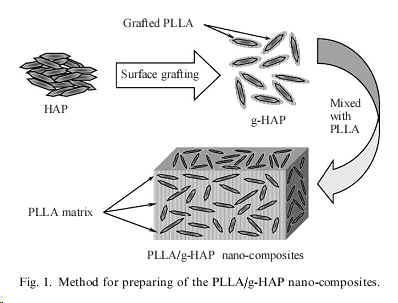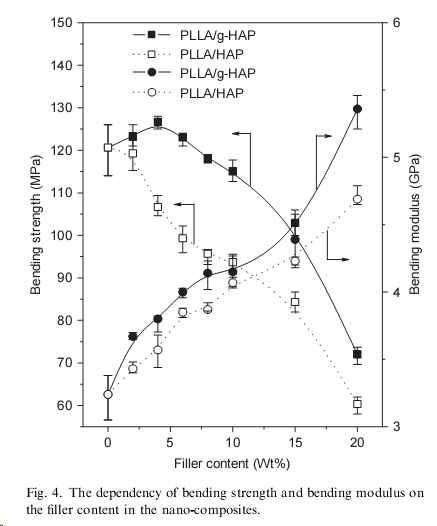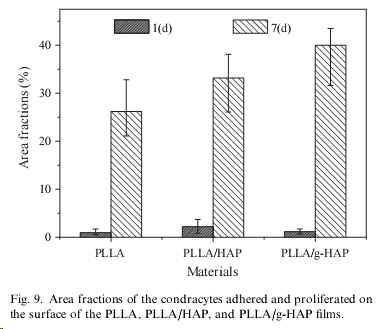Nano-composite of poly(L-lactide) and surface grafted hydroxyapatite: Mechanical properties and biocompatibility
作者:Zhongkui Hong, Peibiao Zhang, Chaoliang He, Xueyu Qiu, Aixue Liu, Li Chen, Xuesi Chen and Xiabin
关键字:Polylactide; Hydroxyapatite; Composite; Mechanical properties; Biocompotibility; Cell culture
论文来源:期刊
具体来源:Biomaterials, 2005, 26(32):6296-6304
发表时间:2005年
[Abstract]: In order to improve the bonding between hydroxyapatite (HAP) particles and poly(L-lactide) (PLLA), and hence to increase mechanical properties of the PLLA/HAP composite as potential bone substitute material, the HAP nano-particles were surface-grafted with PLLA and further blended with PLLA. The structure and properties of the composites were subsequently investigated by the mechanical property testing, the differential scanning calorimeter measurements (DSC), the scanning electron microscopy (SEM), the polarized optical microscopy (POM), and the cell culture. The PLLA molecules grafted on the HAP surfaces, as inter-tying molecules, played an important role in improving the adhesive strength between the particles and the polymer matrix. At a low content (approximately 4 wt%) of surface grafted-HAP (g-HAP), the PLLA/g-HAP nano-composites exhibited higher bending strength and impact energy than the pristine PLLA, and at a higher g-HAP content (e.g., 20 wt%), the modulus was remarkably increased. It implied that PLLA could be strengthened as well as toughened by g-HAP nano-particles. The results of biocompatibility test showed that the g-HAP existing in the PLLA composite facilitated both adhesion and proliferation of chondrocytes on the PLLA/g-HAP composite film.



http://www.sciencedirect.com/science/article/pii/S0142961205003297